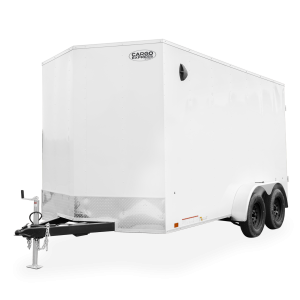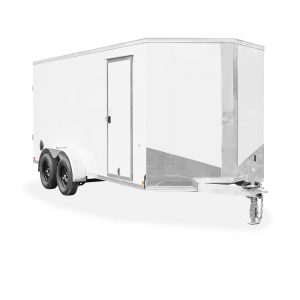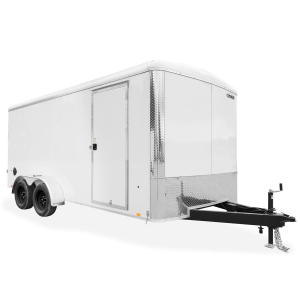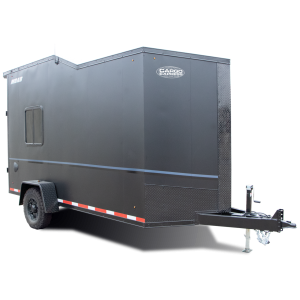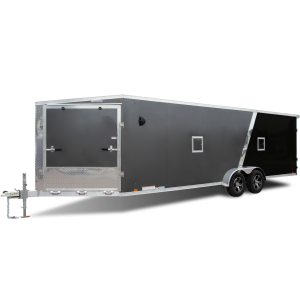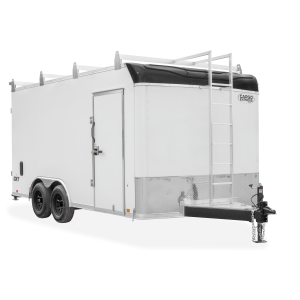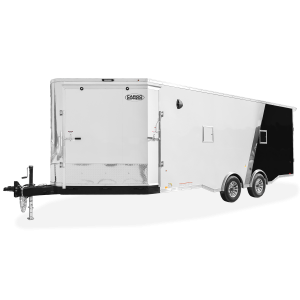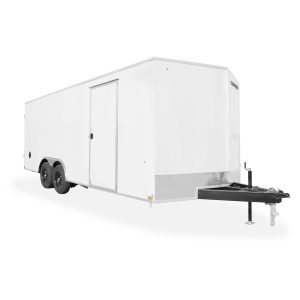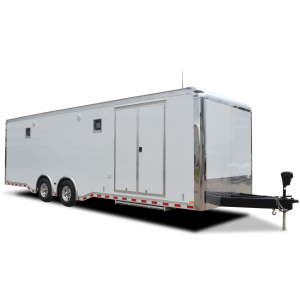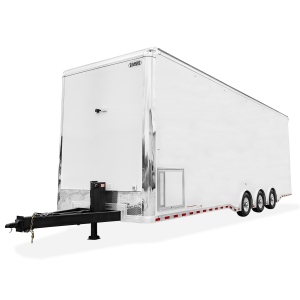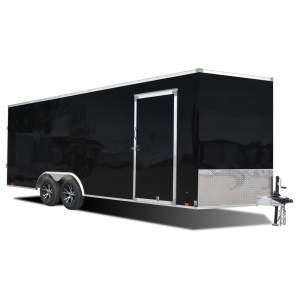How to Tow a Trailer and Trailer Towing Safety Tips
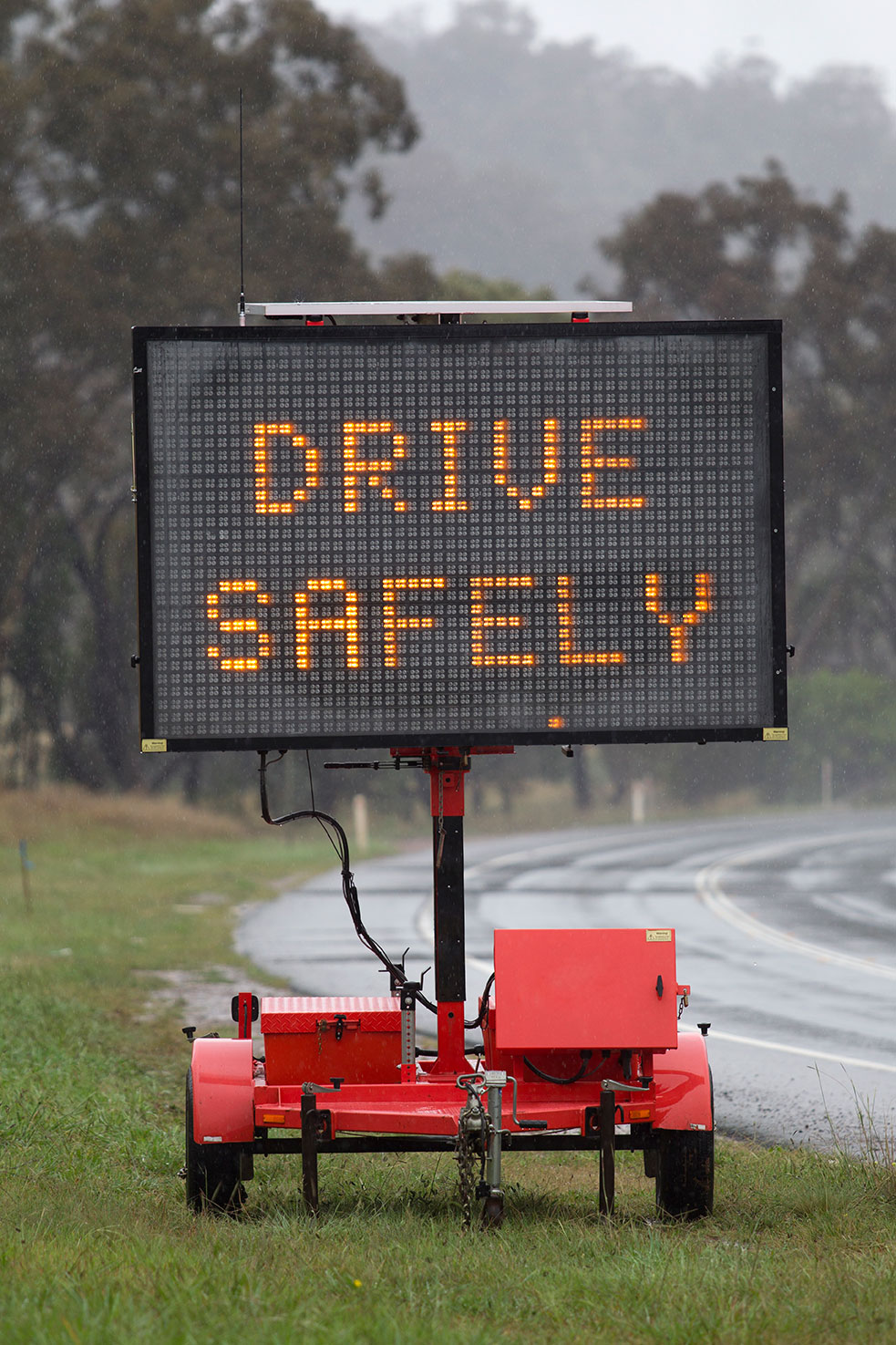 More and more travelers are taking to the road, whether it’s off to a snowy destination with their snowmobile trailer safely behind them or commuting to work with an enclosed cargo trailer in tow. As such, we at Cargo Express find that it’s always a good time to remind owners of the best practices when it comes to trailer towing safety.
More and more travelers are taking to the road, whether it’s off to a snowy destination with their snowmobile trailer safely behind them or commuting to work with an enclosed cargo trailer in tow. As such, we at Cargo Express find that it’s always a good time to remind owners of the best practices when it comes to trailer towing safety.
TRAILER TOWING SAFETY IS ALL ABOUT LOCATION, LOCATION, LOCATION
Cargo Location:
Where you locate your cargo inside the trailer is essential to preventing sway as you drive. Generally, the rule is 60% at the front and 40% at the back. Also, the heaviest cargo should be placed at the front, which means, as you stock the trailer, 60% of your heaviest items should be loaded in first. Towing a properly loaded trailer can reduce the amount of wavering that occurs on the road, as well as keep the weight where the most support is located.
Objects stored at the back of the cargo trailer often take the weight off the forward tires. This can cause multiple issues when steering and braking, since the front tires need full contact with the road to perform as intended.
Tie-Down Location:
If available, it’s key to utilize the surface mount rope rings and tie downs located inside your trailer. By tying your items down, you can reduce the shifting that may naturally occur during travel. Frequent stops are bound to happen, so the more restraints and angles you use, the better protected your cargo will be.
Should one of your objects topple or shift in transit, damaged goods won’t be your only concern. When objects shift their weight and placement, they can prevent the vehicle from braking and slowing down when needed.
Parking Location:
Always try and park where you won’t need to back up or perform a 20-point turn when exiting. Instead, opt to drive around a bit longer to find a pull-through space. Or, if it’s a parking lot, park further away and you’re bound to find plenty of space to maneuver in and out.
Long-time owners can attest to the initial nerve-wracking experience of backing up their trailers. To avoid jack-knifing the trailer and causing a collision between your vehicle or another object, make sure you take it slow and plan your moves beforehand. If there’s an able passenger or spotter available to help you out, then make sure to utilize them.
Either way, use your mirrors and go slow. Best practice is to put your hand on the bottom of the steering wheel and direct the trailer’s course this way. Now, when you move your hand to the left, the trailer will go to the left. Move it to the right and to the right the trailer will go. However, don’t just turn and hit the gas. Slowly make sure the trailer angles in the direction you want it to go and then begin to gradually unsteer as you back up. This way the towing vehicle can even out and direct the trailer further down the desired path.
TRAILER TOWING SAFETY IN ACTION
When towing a trailer, it’s recommended that you reduce your speed and don’t push the limits of what you’d typically accomplish on the road. That means being aware of your surroundings and knowing the potential curves, stops and speedbumps that may lie ahead.
Just like a semi-truck or school bus driver, you’ll need to leave extra room between yourself and the vehicles around you. The more distance, the better, since you will no longer slow down as quickly as you would when not towing a trailer.
Did you notice all those downhill speed warnings that alert drivers to reduce their speed or remain in the right lane? Those now apply to towers, as well. Since you’ll be carrying extra weight, slowing down as you descend a hill will be made more difficult. However, if you reduce your speed beforehand and avoid slamming on your brakes frequently—the vehicle will slow down naturally—you should be able to handle changing elevations just fine.
ALWAYS DOUBLE-CHECK THE ESSENTIALS WHEN TOWING A TRAILER
Tires:
Adequate tire pressure can be the difference between an efficiently-towed trailer and a trip that drags down your gas mileage and causes severe instability. Before you get moving, always make sure your tires have been filled to the recommended pressure level and that they don’t show signs of wear and tear that can cause blowouts during transit.
Brakes and Bearings:
If included on your cargo trailer, inspect your brakes for signs of wear, weathering or anything else that could prevent them from functioning properly. With essentially two vehicles to slow down, a healthy braking system is a vital component of a safe towing experience.
Often forgotten, but just as crucial to your trailer’s performance, are the tire bearings. These need to be properly lubricated and checked for damage before each trip. As with any of the critical functions on your trailer, make sure to replace and maintain as needed.
Mirrors:
Before heading out, you’ll want to make sure all auxiliary items are functioning properly. This means your mirrors should be clean, facing the desired directions and scraped clean of ice or dirt.
Lights:
Make sure all exterior lights are working, such as the LED tail and clearance lights found on Cargo Express trailers. In dark and snowy conditions, you’ll want to offer as much indication of your presence on the road as possible. Also, check to make sure any interior dome lights (if included) are fully functional.
KNOW YOUR TOWING TRAILER’S PAYLOAD AND TONGUE CAPACITIES
While Cargo Express owners can find their capacity limits on the unit’s included literature or on any of the corresponding trailer specification pages, all trailer owners should become familiar with their pull-behinds before taking to the road. These numbers will often dictate what you can take with you, as well as which paths you can traverse.
In addition to the tips provided within this trailer towing guide, you can find the gross trailer weight (GTW) and tongue weight (TW) specifications on Cargo Express’ primary Towing & Safety page. Just as essential to understanding and maintaining your trailer, visit the Trailer Hitching page to make sure you’re properly connected and ready to go.
As always, when in doubt, please refer to your owner’s manual or contact the manufacturer’s customer service team for answers regarding your specific needs and concerns.

